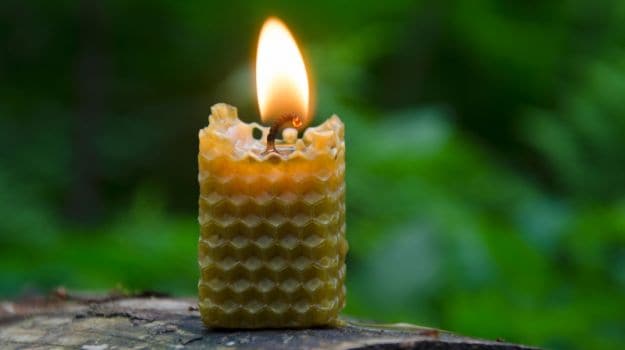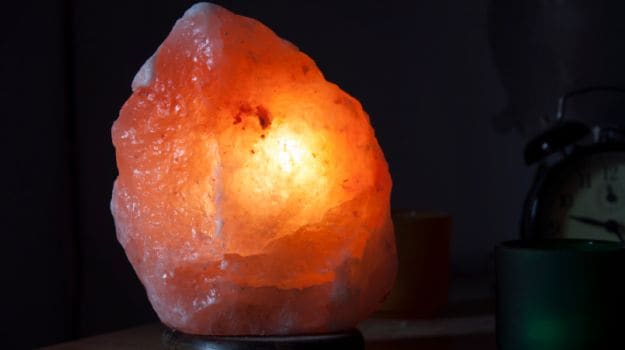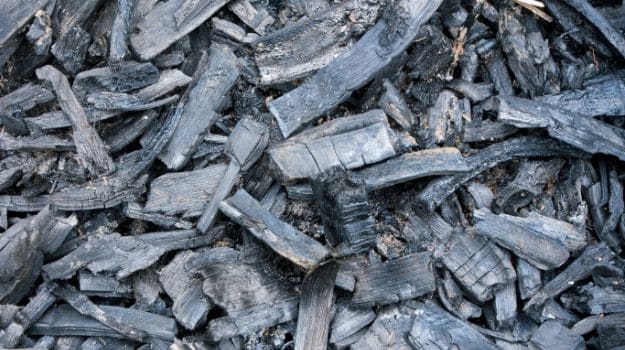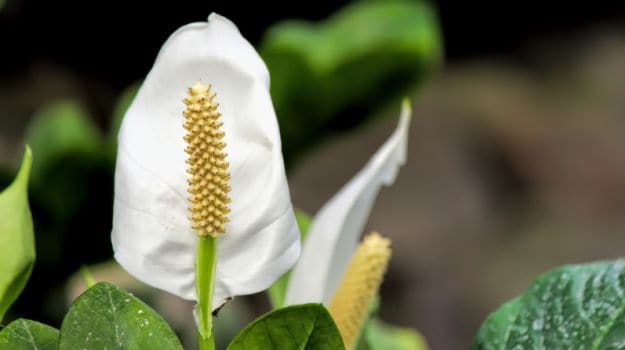Delhi Air Pollution: 6 Natural Ways to Purify Air at Home
 As Delhi’s air pollution remains at hazardous levels, we’ve listed 6 natural ways to purify at home.
As Delhi’s air pollution remains at hazardous levels, we’ve listed 6 natural ways to purify at home.
Did you know: The air inside your home is actually 2 to 5 times more polluted and toxic than the air you breathe outdoors? It’s appalling, really. We go for regular health check-ups, pop pills on a daily basis, stress over allergies, but neglect the most basic thing there is – the quality of the air we breathe 24/7. Everything from the mattresses we sleep on to our kids’ pajamas can contain harmful chemicals and toxins. Dr. Manoj K. Ahuja, Healing Touch Hospital says, “Breathing in toxic gases can cause rashes, coughing, irritation in the eyes, as well as asthma like symptoms.
Formaldehyde, a toxic gas, is found in insecticides, glues, shampoos, shaving creams, carpets and is actually a carcinogen. It is even found in cigarette smoke which is a major contributor to air pollution and can lead to potentially fatal complications, even if it’s secondhand smoke. Also, chemicals from paint, woodwork in the house or office, hair and nail products, cleaning products and detergents – all contribute to air pollution inside our homes. It surprises me how so many potentially harmful contaminants get trapped inside our homes, and we can’t even open a window to get some fresh air!
A team of researchers led by the University of Surrey in the United Kingdom published a study on air pollution in Delhi, also known as ‘the most polluted city in the world’. According to the study, New Delhi suffers from a “toxic blend of geography, growth, poor energy sources and unfavourable weather which boosts dangerously high levels of air pollution”. And thanks to the Diwali 2016 weekend, Delhi’s air pollution is at an all time high. On 30 and 31 October, 2016, from 9 pm to the wee hours of the next morning, North India – especially parts of Delhi – recorded PM 2.5 levels of over 500 µg/m³, exhibiting “beyond scale” pollution values, according to the database run by Berkeley Earth, an independent US research organisation.
The capital city is gasping for air, shrouded in a thick blanket of toxic smog. So we thought it fit to list natural ways to purify the air at home and your workplace, since we spend so much of our time inside the house (an average of 90%). After all, breathing in clean air should be a priority.
6 Natural Ways to Purify Air at Home
1. Increase Ventilation
Ventilating homes reduces moisture levels, a major problem for indoor air quality. But no, we’re not asking you to open a window and let all the outdoor air pollution enter your living space. Instead, install trickle vents to purify and cycle the air you breathe indoors. Another great alternative is to use exhaust fans which help carry pollutants outside. Make it a point to ventilate your kitchen since cooking can be a major source of indoor air pollution, especially if you have a gas stove. Scientists who measured indoor air quality found that cooking a single meal on a gas stove can produce levels of nitrogen dioxide that the EPA considers unsafe to breathe. Also, after you take a shower, be sure to vent out all the steam and extra moisture in the air which can cause mold and mildew growth by turning the fan on.

2. Beeswax Candles
If you love to fill your home with scented candles, avoid paraffin candles which are petroleum derived and release benzene, toluene and soot into the air. Since these candles do more harm than good, opt for beeswax candles which ionise the air and neutralise toxic compounds and other contaminants. Besides improving the air quality at home, beeswax candles burn slowly so you don’t need to replace them often. In fact, pure beeswax candles burn with almost no smoke or scent. They are especially helpful for asthmatics and to remove common allergens like dust from the air.

3. Salt Lamps
“Salt crystal products tend to reduce airborne irritants, pathogens and allergens by pulling water vapour out of the air. Himalayan pink salt is a natural ionic air purifier that pulls toxins from the environment and neutralises them”, says Dr. Manoj K. Ahuja, Healing Touch. Simply adding a Himalayan pink salt lamp in your room or near your desk at the office does the trick, in terms of functionality and decor. You can leave it on at night as well, since the natural orange glow doesn’t disrupt sleep hormones. Note to remember: Salt lamps improve air purification much more when they are turned on, but surprisingly work when turned off too.

4. Activated Charcoal
A fantastic way to purify indoor air is with activated charcoal, also referred to as active carbon. It’s odourless, highly-absorptive and works wonders with eliminating toxins from the air. Another fantastic way to purify air at home naturally is bamboo charcoal.

5. Houseplants
NASA conducted a study which stated, “Houseplants can purify and rejuvenate air within our houses and workplaces, safeguarding us from any side effects associated with prevalent toxins like ammonia, formaldehyde and also benzene.” It’s the best way to counter the impact of pollution indoors, particularly if you have a family member with some respiratory illness. It’s suggested that you have at least one plant per 100 square feet of home for efficient air cleaning to be accomplished. The best plants to filter toxins from the air are Peace Lily which prefers moderate sunlight, Lady Palm or Broadleaf Lady Palm which is adaptable but prefers bright, indirect light.
 Peace Lily
Peace Lily
Areca Palm, also referred to as Butterfly Palm, Golden Cane Palm and Bamboo Palm grow in bright, indirect light and can be kept anywhere, especially in carpeted rooms or those which have recently been painted. Chrysanthemum, commonly referred to as Pot Mums loves bright sunlight, and Money Plant i.e. Golden Pothos – also called Devil’s Ivy, Money Plant, Silver Vine, Centipede Tongavine – is adaptable. Another houseplant which helps purify the air is English Ivy – often called Common Ivy or European Ivy and can be kept in rooms with computers, printers, fax machines et al. Boston Fern also grows easily in bright light and is best for hanging baskets. Spider Plant is useful in kitchens with gas stoves as it helps control carbon monoxide and xylene.
6. Essential Oils
In the presence of essential oils like cinnamon, oregano, rosemary, thyme, grapefruit lemon, clove, tea tree – viruses, fungi, bacteria and even mold cannot survive. Studies from Weber State University show that Thieves Oil has a 99.96% kill rate against airborne bacteria. It is an antiseptic blend of pure essential oils including pine needle, cinnamon, thyme, eucalyptus, lemon and grapefruit which helps keep the home free from germs and purifies the air. You can add it to soaps and detergents to breathe fresher, cleaner air.

10 Quick Tips
1. Carpets are a toxic sponge. Clean them often. Especially the part of the carpeting near the entry of the house. According to an EPA study, if you use a doormat and take shoes off at the door – common toxins are reduced by about 60%.
2. Eliminate excessive moisture, dust build-up and the use of chemical products like paint, detergents, and synthetic fibers. Side note: Say no to dry dusting! Use a damp cloth to clean up and to avoid breathing in all the dust particles which are lifted into the air while you clean.
3. Quit smoking, and prevent guests from smoking inside your house.
4. When it comes to household items, always be on the lookout for au naturel alternatives to chemical-laden items.
5. If you have plants at home, clean leaves regularly to get rid of dirt.
6. Take off your shoes! Shoes carry coal tar, cigarette ash, pesticides, fungal spores, lead dust, pollen, wood smoke, industrial toxins, mutagens, dust mites, and who knows what else!
7. Resist the temptation to open windows and cool your home by using ceiling fans, heat-blocking window treatments and minimising the use of heat-producing appliances.
8. Since dry cleaning solvents can be toxic to breathe, first let dry-cleaned items air outdoors before bringing them inside in order to prevent chemicals from entering your home.
9. Know the limitation of air purifiers, as they can help reduce some of the tiniest air borne particles to an extent but fail to get rid of larger particles effectively.
10. Clean your air conditioner to help keep asthma triggers away from your house. And as soon as you notice drips and leaks, get it fixed.
